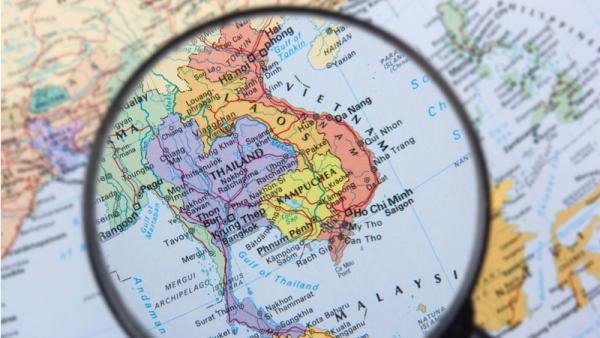
Bob Carr, Director, Australia-China Relations Institute, University of Technology Sydney |
This article appeared in The Australian Financial Review on September 14 2017.
The United States’ unavoidable focus on North Korea reinforces the impression it’s not deeply committed to Southeast Asia. Reinforces, because the impression was there. After all, only three days into his presidency, Donald Trump had torn up the Trans-Pacific Partnership, what diplomat Kurt Campbell had described as ‘the true sine qua non of the pivot’.
Campbell had been one of the architects of the pivot.
None of the 10 Southeast Asian capitals missed the symbolism.
Nor another symbol. It’s now seven months since Trump’s inauguration and there’s still no permanent Assistant Secretary of State for East Asia and the Pacific, a post made prominent by Campbell.
In April, 74 percent of opinion leaders in Southeast Asia were already saying China is now the most influential country in the region. Only 3.5 percent rated the US. The survey was conducted by Singapore’s ASEAN Studies Centre. It questioned businesspeople, officials, academics and media.
It may unsettle Australians but the leadership in the region believes China is now the dominant power.
Among the northern ASEAN states, it’s simply a matter of Chinese wealth seeping south, a function of China’s proximity and cumulative economic growth. One example makes the point. In 2016, the Chinese linked Shanghai by rail to Kunming, the capital of China’s southernmost province, Yunnan. The province shares a 4000-kilometre border with Southeast Asia. It is a natural next step for China’s rail behemoths to continue southward, to Laos, Myanmar, Thailand, Vietnam and Cambodia. By the early 2020s, the Pan-Asia Railway Network claims it will do that, via three interconnected lines.
And so it goes with highways, ports and pipelines, a simple overflow of Chinese infrastructure investment into the continental ASEAN states.
Proximity trumps diplomacy. Nobody in the region believes China is going to leave it.
This is why, in 2016, Aung San Suu Kyi, after taking office as Myanmar’s State Counsellor, visited Beijing before Washington. Australia’s most comfortable friendship in the region is with Singapore -- which will continue to both hedge and engage with China. Its former foreign minister George Yeo said recently that ‘Southeast Asian countries have a long history of the waxing and waning of China’s dynasties and they know that when China is organised ... it is just not worth the fight’.
Indonesia’s President Joko Widodo is not going to overlook the fact that, in 2016, China overtook the US to become the third-largest investor in the country. He’s not profoundly interested in diplomacy and is described as transactional. One contact in the region told me his ministers are under instruction not to antagonise China. Australian press speculation about joint Indonesian-Australian patrols, implicitly directed at China, came to nothing.
Vietnam in August succeeded in getting ASEAN foreign ministers to endorse a statement that ‘took note’ of concerns about land reclamations and stressed non-militarisation in the region. But it’s unlikely the other nine ASEAN states would fall in behind a Vietnamese policy that would go further in challenging China.
Yet China’s regional success forces restraint upon it. For example, any attempt to dredge at Scarborough Shoal would probably blow sky-high its decisive diplomatic gains with the Philippines, as well as unsettle other ASEAN states.
Still, even before Trump, the Pew Research Centre found in 2015 that, while the Philippine public was concerned about territorial disputes with China, 54 percent had a positive opinion of China, as did 63 percent of Indonesians. Malaysia’s openness to Chinese capital is the most overlooked story in the region.
As one Australian diplomat put it to me: ‘The situation we used to talk about as being 25 years off [Chinese dominance] has suddenly become the current reality.’
This seems to have shocked some Australian strategic thinkers who keep talking up favourite nostrums. But, no, India is not going to be drawn into the hoary idea of ‘a quadrilateral’ aimed at containing China. How many times do they have to politely decline before we get the message? Ditto for Japan, more so now than ever.
According to The Wall Street Journal, the United States’ freedom of navigation patrols will now run to a schedule. The Americans alert the local Chinese commanders and effectively get waved through. The polls suggest it doesn’t alter public views in the region of who counts most in their futures.
In line with international relations practice, nations in Southeast Asia still favour a balancing presence by the US. Moreover, any bullying by China will see a coalition to resist it springing into existence. But in the meantime, Trump tweets about racist sheriffs, and the US hovers close to new Middle East quagmires. North-east Asia looms as the real and present danger.
Meanwhile, at the other end of Asia, China’s just over the horizon, richer by the hour, flinging out rail, roads and pipelines.
Surveying this landscape, 10 ASEAN capitals have made their calculations. And I don’t think Australia has been consulted.
Author
Professor Bob Carr former foreign minister and NSW premier, is Director of the Australia-China Relations Institute at the University of Technology Sydney.


